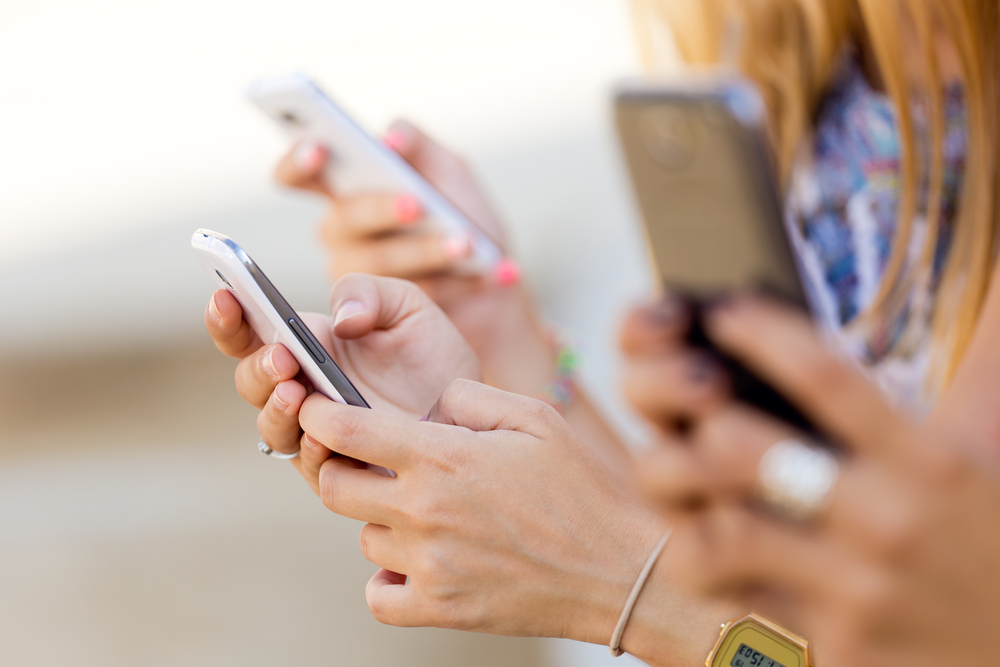Does your thumb hurt? It could be because you’re texting too much. But luckily there are treatments for texting thumb.
These days texting has replaced phone calls as our preferred method of communication. Want proof? A 2011 Pew Research survey revealed 73 percent of smartphone owners occasionally use the text messaging function, and on average, we send 41.5 texts per day. In the decade since that report, texting has surely increased. While text messaging is convenient, it’s also given rise to an orthopedic condition called texting thumb. So what is texting thumb and how do you treat it?
What is texting thumb?
Texting thumb is a repetitive injury that develops from constantly holding, scrolling, and texting on a smartphone or tablet. Over time, the sheath surrounding the thumb’s tendon becomes inflamed, leading to swelling and stiffness. This can also cause a condition known as trigger finger, or a sensation of “locking up” when you try to straighten or bend the thumb. A related injury, De Quervain’s tenosynovitis, refers to an inflammation of the tendon between the wrist and thumb. Swelling and pain around the base of the thumb as well as difficulty moving the thumb are symptoms of De Quervain’s tenosynovitis.
Luckily, you don’t have to give up your smartphone just yet. Texting thumb is a very treatable and avoidable condition.
How is texting thumb treated?
Your thumbs do a lot of amazing things. But our thumbs weren’t meant to take on the strain of tapping on modern technological devices, like smartphones, tablets, and gaming consoles, everyday.
To diagnose texting thumb, your orthopedist will perform a physical examination and ask you to fold your thumb into a fist. If you feel pain, you have texting thumb. Fortunately, the condition is treatable with these seven methods:
Giving your thumb a rest. Probably the best way to relieve the pain and stiffness of texting thumb is to give your thumb a rest for a few days. Short periods of rest will prevent long-term issues. Instead of texting, make a phone call or leave a voicemail.
Taking OTC anti-inflammatories. Over-the-counter medications such as ibuprofen or naproxen can reduce the pain in your thumb.
Applying an ice pack. To tamp down swelling, apply an ice pack on the affected area for 15 minutes every four to six hours.
Wearing a brace. Your doctor may fit you with a hand brace to support the thumb and wrist. They will recommend how often to wear it and for how long each time.
Doing stretching exercises. A physical therapist can suggest stretching exercise to increase mobility in the thumb. One to try at home is gently stretching your thumb back using the index finger on the opposite hand. Hold for five seconds and repeat several times, aiming for a total of 20 times a day.
Getting a corticosteroid injection. A corticosteroid injection into the tendon sheath of the thumb can manage pain. However, you may not feel relief for several weeks, so this should only be tried after simpler treatment options.
Scheduling surgery. If the corticosteroid injections don’t work, surgery may be your next option. In this procedure, the surgeon opens the tendon sheath to unlock the tissues holding back the thumb. Recovery time usually takes four to six weeks.
How to avoid texting thumb
While the best way to avoid texting thumb would be to give up texting or using your smartphone for anything other than calls altogether, that’s not likely to happen. Fortunately, you can avoid developing texting thumb by following these tips:
- Support your forearms when using your smartphone.
- Hold the smartphone in one hand and use the index finger on the other hand to write messages or scroll. That way, you’re not using your thumb all the time.
- Slow down when you text and keep messages short when possible.
- Keep track of your text messages so you know if you’re texting too much.
- Rest if you feel pain and stiffness.
The plain fact is that texting thumb is an unintended consequence of our reliance on mobile technology. Luckily you can still enjoy these tech marvels while taking precautions to avoid a painful thumb.
Get help for your texting thumb pain
If you are experiencing pain in your thumb that you think may be tied to texting thumb or to another condition, it’s important that you consult with an orthopedist or physical therapist to get a proper diagnosis and identify an appropriate treatment plan. At New York Bone & Joint Specialists we’re experts in treating orthopedic injuries like texting thumb. Contact us today for an appointment.




